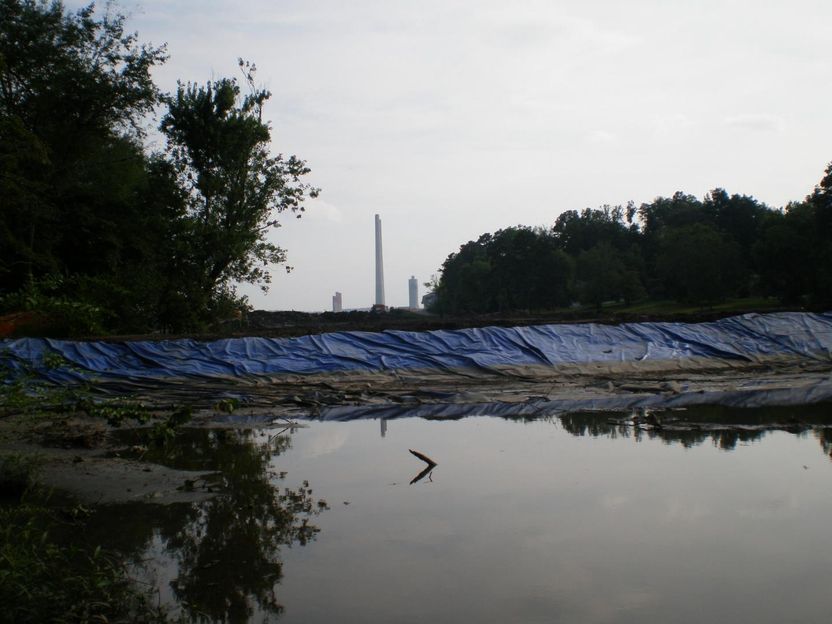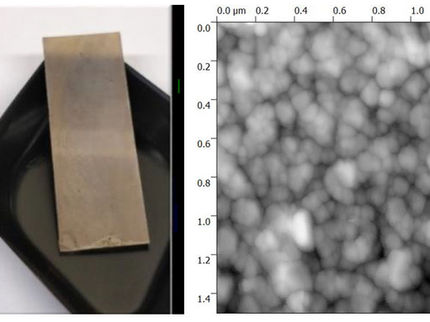Oxygen key to containing coal ash contamination
As energy companies decide what to do with aging coal ash disposal facilities in North Carolina and across the nation, they may be overlooking a fundamental but potentially critical variable -- oxygen.

This is the TVA Kingston Fossil Plant in Roane County, Tenn. was the site of a 2008 spill of more than 1 billion gallons of coal ash slurry.
Duke University
In a new study researchers from Duke University demonstrate that the level of oxygen in a coal ash disposal site can greatly affect how much toxic selenium and arsenic can be leached from the system.
"The tests that the Environmental Protection Agency relies on consider variables like the pH of the water, but they don't look at whether the system is aerobic or anaerobic," said Heileen Hsu-Kim, the Mary Milus Yoh and Harold L. Yoh, Jr. Associate Professor of Civil and Environmental Engineering. "We wanted to demonstrate that oxygenation actually matters a lot, especially for arsenic and selenium."
In the wake of a 2014 coal ash spill into North Carolina's Dan River from a ruptured Duke Energy drainage pipe, the question of what to do with other aging coal ash retention ponds and future waste has been a hotly debated topic.
Duke Energy currently plans to dig up 24 of its 36 ponds in the Carolinas. But the 12 remaining ponds without a cleanup plan hold more than 70 percent of the 108 million tons of ash held in North Carolina ponds.
One option is to essentially turn the ponds into a landfill by removing the water, capping the remaining waste with a top liner and covering it all with soil.
"Some of these ponds did not have bottom liners when they were originally constructed, so they'll be susceptible to leaking to groundwater even if they are covered on top," said Hsu-Kim, who also holds an appointment in Duke's Nicholas School of the Environment. "When you cap a site, you're separating it from air. And if the buried waste goes anaerobic, it could enhance the leaching of some elements, leading to more contamination than expected."
In the study, Hsu-Kim and her graduate student Grace Schwartz set up a series of microcosms -- small-scale laboratory replicas of an environment. They then looked at how much arsenic and selenium leached out of the system both with and without oxygen. Both contaminants are potential problems for aquatic wildlife, and arsenic can be cancerous to humans.
The tests showed that with oxygen, the levels of selenium leaching are much higher than that of arsenic. But that trend flips when the system becomes anaerobic -- there is an increase in the leaching of arsenic and a decrease for selenium.
Hsu-Kim points out that this result is not surprising given the chemistry of the two elements, and previous projects not related to coal ash sites have demonstrated these results in the real world. The study points out that this could be happening in coal ash sites as well.
"I'm trying to figure out if anyone is thinking about the fact that they're changing the oxygen conditions within the ash site by covering it," said Hsu-Kim. "This research suggests that some of the proposed methods for ash ponds closure in North Carolina may not be a slam dunk solution to the problem."
Original publication
Original publication
Grace E. Schwartz, Nelson Rivera, Sung-Woo Lee, James M. Harrington, James C. Hower, Keith E. Levine, Avner Vengosh, Heileen Hsu-Kim; "Leaching potential and redox transformations of arsenic and selenium in sediment microcosms with fly ash"; Applied Geochemistry; 2016
Organizations
Other news from the department science

Get the chemical industry in your inbox
By submitting this form you agree that LUMITOS AG will send you the newsletter(s) selected above by email. Your data will not be passed on to third parties. Your data will be stored and processed in accordance with our data protection regulations. LUMITOS may contact you by email for the purpose of advertising or market and opinion surveys. You can revoke your consent at any time without giving reasons to LUMITOS AG, Ernst-Augustin-Str. 2, 12489 Berlin, Germany or by e-mail at revoke@lumitos.com with effect for the future. In addition, each email contains a link to unsubscribe from the corresponding newsletter.




























































